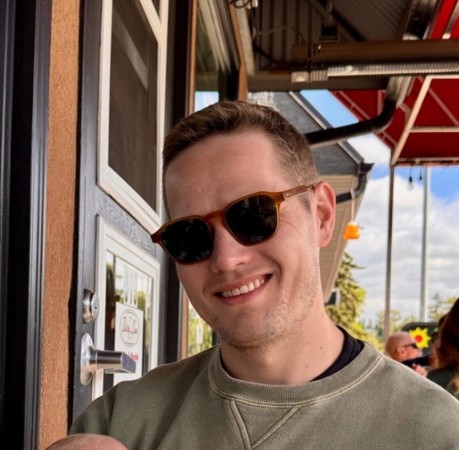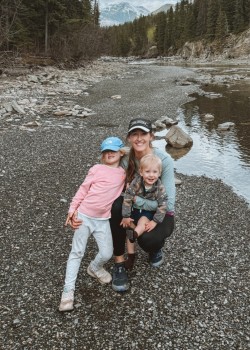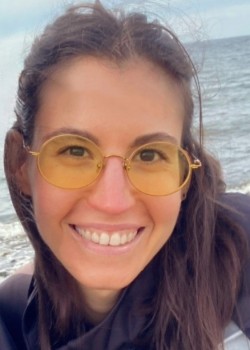When PARA reached out to ask whether I’d consider writing this month’s blog post on “a day in the life of a neurology resident,” I said yes immediately. The timing was perfect – I had just wrapped up a week on the inpatient neurology service at Foothills Medical Centre, and the experience left me energized: it was a week filled with fascinating cases, rewarding teamwork, and moments of truly high-quality patient care.
In Calgary, Adult Neurology residents cover two admitting hospitals: Foothills Medical Centre and South Health Campus. At Foothills, we run two parallel inpatient teams – Pink and Grey. The teams alternate admitting days, taking consults from the emergency department and inpatient wards. On “off-take” days, we have more time to focus on diagnostics, imaging, and detailed neurological exams.
That brings me to the first myth I’d like to dispel: in the age of MRI, the neurological exam doesn’t matter. Our exam isn’t just a formality – it’s often the linchpin of diagnosis. We use it to localize lesions, guide investigations, evaluate treatment response, and prevent unnecessary or invasive testing altogether. A patient with dysphagia and dysarthria but a normal MRI might be diagnosed with progressive supranuclear palsy through a careful extrapyramidal exam. Focused exam maneuvers might reveal myasthenia gravis in a patient with head drop and respiratory failure. And just last week on stroke call, a patient with acute hemiplegia and a normal CT angiogram showed all the positive signs of a functional neurologic disorder. The neurological exam remains central to what we do, and is our diagnostic compass in a complex and intricate nervous system.
On service, mornings often begin with educational sessions. On Tuesday mornings, we gather for Leçons du Mardi, weekly case-based sessions focused on neurological localization. Throughout the week, we attend Neuroradiology Rounds, Stroke Case Rounds, and Grand Rounds. Education continues at the bedside and on the go: staff and senior residents help junior learners refine their exam skills, and we hold impromptu chalk talks or mini-sessions on clinical pearls, emerging research, or challenging differentials. One myth we often hear from students is: neurology is “too hard” – the nervous system is too complex to understand and master. What we try to teach anyone that comes through neurology, though, is that with a solid understanding of anatomy and a systematic way of thinking, neurology starts to feel not only manageable, but surprisingly intuitive.
On admitting days, we round on our inpatients and move their care ahead before turning to new consults. Common consults on service include seizures, encephalitis, altered mental status, weakness, myelopathies, movement disorders, parkinsonism, and headaches. Often, even the seemingly simple consults hide more complex diagnostic questions, and they become opportunities to meaningfully change the trajectory of someone’s illness, and life. This brings me to another widespread myth: neurologists don’t actually treat anything, they just diagnose. It’s a notion I hear surprisingly often, and one I’m especially passionate about dispelling.
I think of a young woman I met early in residency – a recent immigrant from Ghana with refractory epilepsy. Her seizures had left her injured, unable to drive or work, and had traumatized both her and her family. She was referred to the epilepsy clinic, where, after months of monitoring, SPECT scans, and carefully placed depth electrodes, her seizures were traced to a tiny region of insular cortex. After surgical resection, she has been seizure-free ever since. I think of patients with advanced Parkinson’s disease, so debilitated by tremor they can’t feed themselves – until they undergo deep brain stimulation and watch their tremor vanish in real time. I think of a patient with myasthenia gravis who spent months in the ICU and now competes in powerlifting, deadlifting over 600 pounds. Or, of the 50-year-old man I saw recently on an overnight stroke call who was profoundly aphasic and hemiplegic from a left MCA stroke. Twelve hours after thrombolysis and mechanical thrombectomy, he hugged his daughter and told her he loved her. These aren’t rare stories in neurology – they’re daily victories. Patients with debilitating chronic migraine are finding relief with CGRP monoclonal antibodies, and those with aggressive multiple sclerosis may never relapse again thanks to novel B-cell–depleting therapies. Neurology today is every bit as interventional as it is diagnostic.
Later in our day on service, we check in with an inpatient admitted with status migrainosus. From behind her sunglasses, she hesitantly agrees to a set of nerve blocks – greater and lesser occipital, supraorbital, supratrochlear. After that, we check off a few lumbar punctures, and send CSF for advanced diagnostics. This is a perfect opportunity to address another myth: neurology isn’t procedural. In fact, neurology is as hands-on as you want it to be. Neurologists perform lumbar punctures, EMGs, EEGs, Botox injections, nerve blocks, DBS programming, and intrathecal injections, amongst other things. Neurocritical care neurologists intubate, insert central lines, and help manage ICP monitors. Whether you’re drawn to acute, ICU-level care or a more outpatient-focused practice, neurology offers a wide scope of procedural opportunities across diverse practice settings.
As the day winds down and we finish our consults, complete our procedures, and sign our notes, there’s often a little time to exhale. Our residency program and the Department of Clinical Neurosciences prioritize wellness, and on off-take days, we sometimes head home a bit earlier. As a new dad to a five-month-old, I treasure those extra hours, especially when I get home with time to spare before he goes to bed. While residency is undeniably demanding, we neurology residents have the time and flexibility to enjoy our families, hobbies, and lives outside of medicine.
Returning to inpatient neurology always reminds me why I chose this specialty. I’m energized by the teamwork, the diagnostic challenge, the opportunity to teach and learn, and most of all, by the moments when we help patients get back to the lives they love. Residency has its tough days, but I’ve never once wished I was doing anything else.



Be the first to leave a comment!